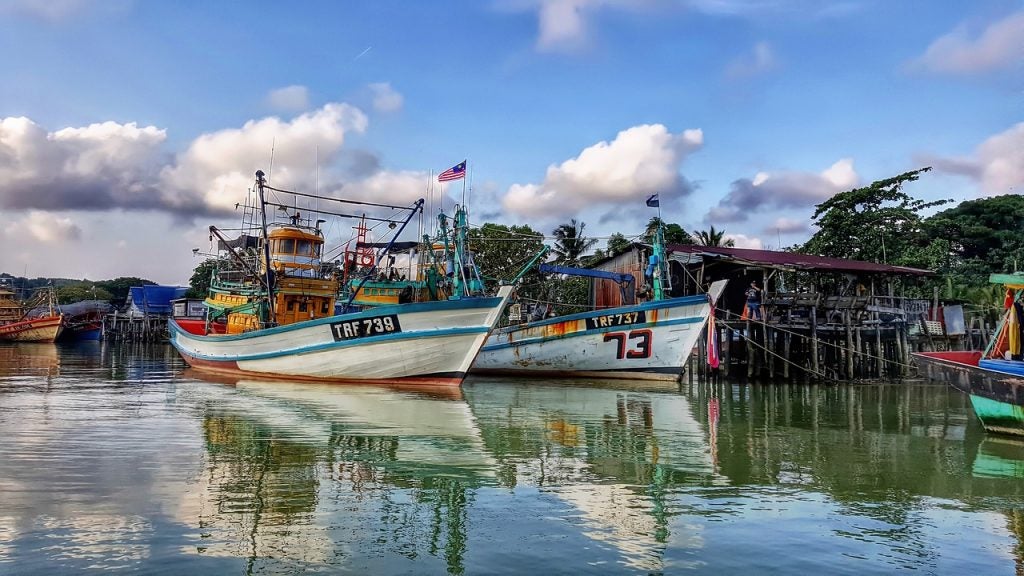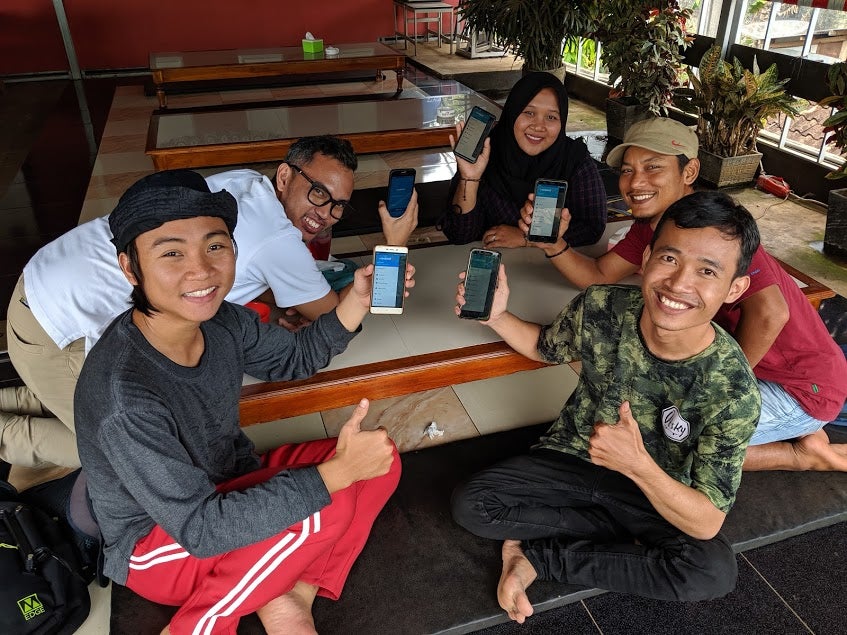
By Chris Cusack and Melissa Mahoney
It doesn’t take too much scrolling these days to see that our oceans — and our entire natural world — are in peril. Overfishing, habitat destruction, plastic pollution and warming temperatures are BIG challenges. And yet, they all have something in common: they can all be improved by sustainable, responsible use of emerging technologies.
The past two decades have seen an incredible range of technological advances that affect just about every community on Earth. From smartphones and wireless communications to cloud-based computing to more powerful sensors and drones, these advances are driving forward a digital revolution that is already beginning to disrupt how ocean industries, such as fishing and shipping, do business on the water.
Digital technologies, like camera-based electronic monitoring and remote vessel tracking by satellite, are helping to ensure compliance with catch limits and other regulations across highly regulated fleets. In small-scale, often poorly regulated fisheries, new sensors, better networks and ubiquitous smartphones are allowing data collection at sea or at the point of landing in a low-cost, comprehensive way, helping advance accountability and achieve global targets like U.N. Sustainable Development Goal 14. Smartphone apps and other technologies are also helping fishermen get a better price for their catch, empowering communities to engage in local marine resource management, and giving stakeholders a stronger voice in the policy process.

As we work to achieve sustainability in fisheries, we are facing yet another level of unprecedented transformation in our oceans due to climate change. How do we ensure that fishers and fishing communities are able to derive the high levels of benefits that ocean ecosystems are capable of providing, even in the face of highly uncertain, climate-driven impacts? Or, put another way, how do we increase the resilience of fisheries and the people that depend on them for survival?
As detailed in a recent report by EDF’s Oceans Technology Solutions team, we describe how various digital technologies can increase the amount, types and timeliness of data collected for adaptive science-based fisheries management — a key pillar of climate resilience. New technologies, such as integrated, open source databases, are helping to organize, visualize and analyze diverse data sets in ways that enable more effective management globally; support market access; legitimize disenfranchised stakeholders; and create business efficiencies that improve technology users’ bottom lines. These factors are all critical to creating more sustainable, climate-resilient fisheries that people around the world can rely on for sustenance and livelihoods.
The past two decades have seen an incredible range of technological advances that affect just about every community on Earth.
With the spread of digital technologies to most walks of life (over half of the world’s population uses smart phones, for example), it seems a small leap to expect their broad application to problems facing our oceans. However, this is not the case; several barriers exist that limit the widespread adoption of technologies in fisheries. These include upfront costs that are too high, confidentiality concerns over data use and a lack of incentives for fishermen to invest at the outset. High costs will partly be addressed by getting technologies to scale, but we should also rethink how information is used, and by whom. Identifying and making more explicit the ways in which fishermen benefit from technology use is key: for example, improving fishing efficiency or improving fishermen’s access to markets.

Another major barrier is flawed fishery policies that are more reactive than responsive, failing to create an environment conducive to participatory design, innovation and thoughtful business investments. Better policies start with bringing together fishery stakeholders, government leaders and managers from the beginning of the design process. This allows a shared understanding of problems and a ground level contribution to solutions, which goes a long way toward developing something that works for everyone.
There is also a lack of information flow between geographies, tech companies and the practitioners implementing solutions on the water. Technologies that don’t work well are trialed repeatedly because project results aren’t common knowledge. And people don’t know what is out there — and what is possible — because the information doesn’t often reach a public domain. Conferences and convening platforms, like Seafood and Fisheries Emerging Technologies (or SAFET) and EM4Fish, enable practitioners to share the results of their projects in progress. This allows for further innovation and the formation of new partnerships and networks, resulting in faster uptake of tools and solutions.
The scale of the problems in our oceans can seem overwhelming, but the vast potential for charting a new course for the future of the oceans using emerging digital technologies is bright. Learn about some of the ways EDF is making this future more tangible here.









